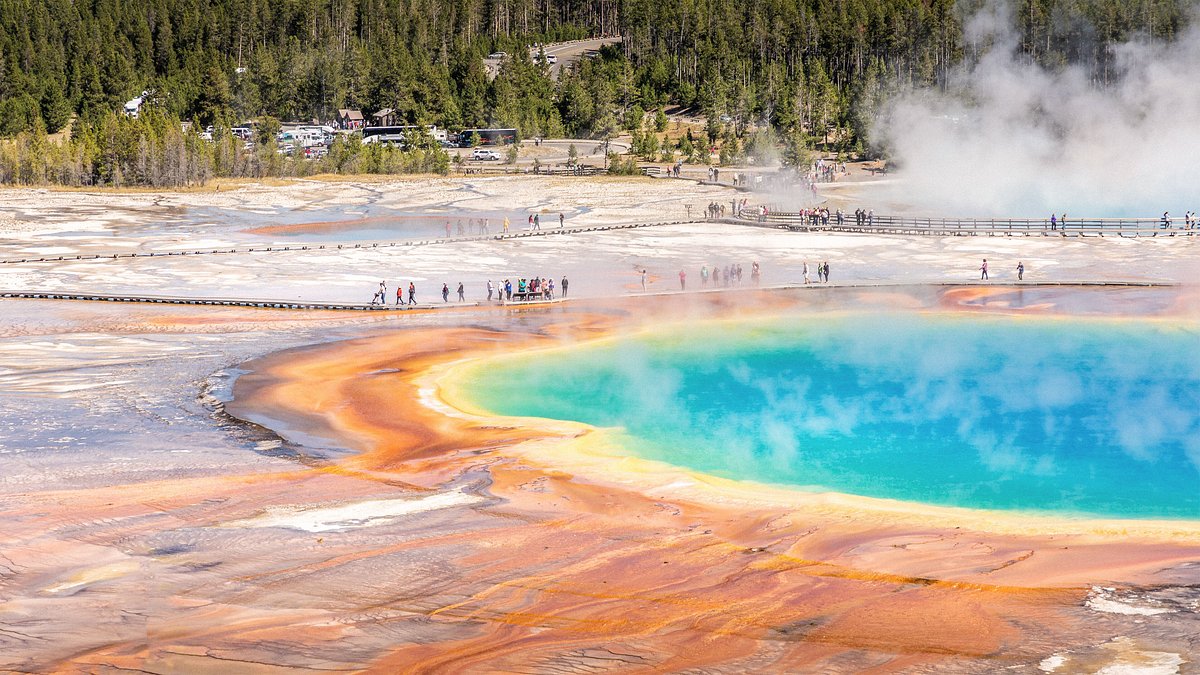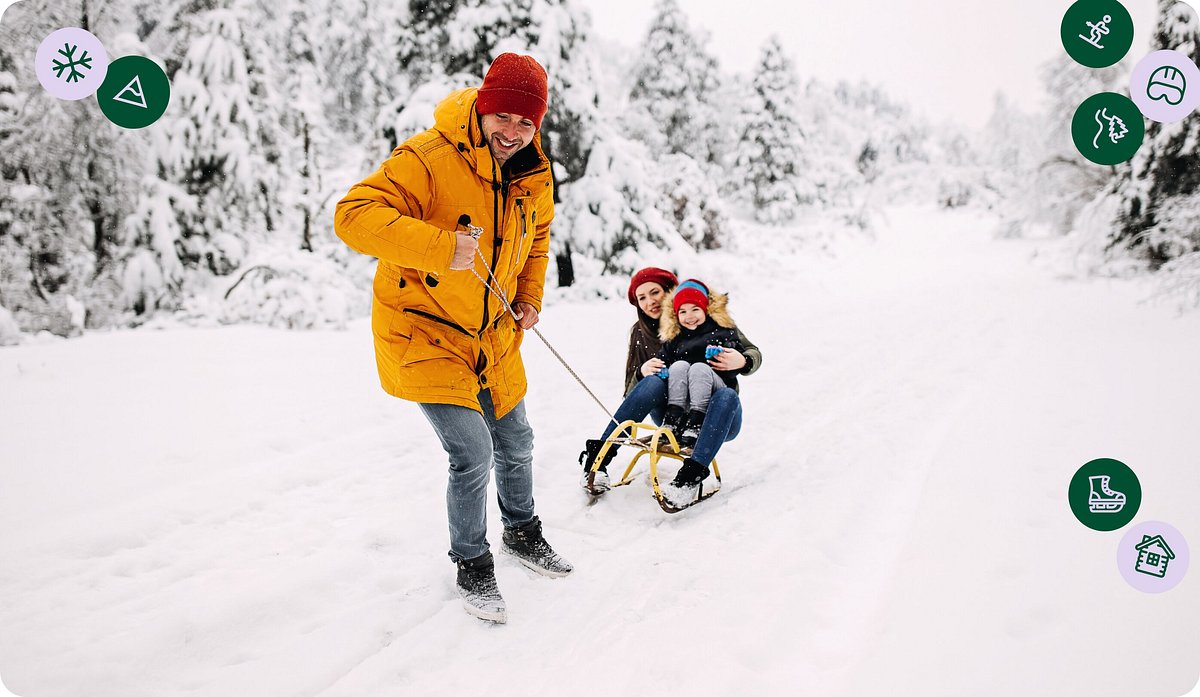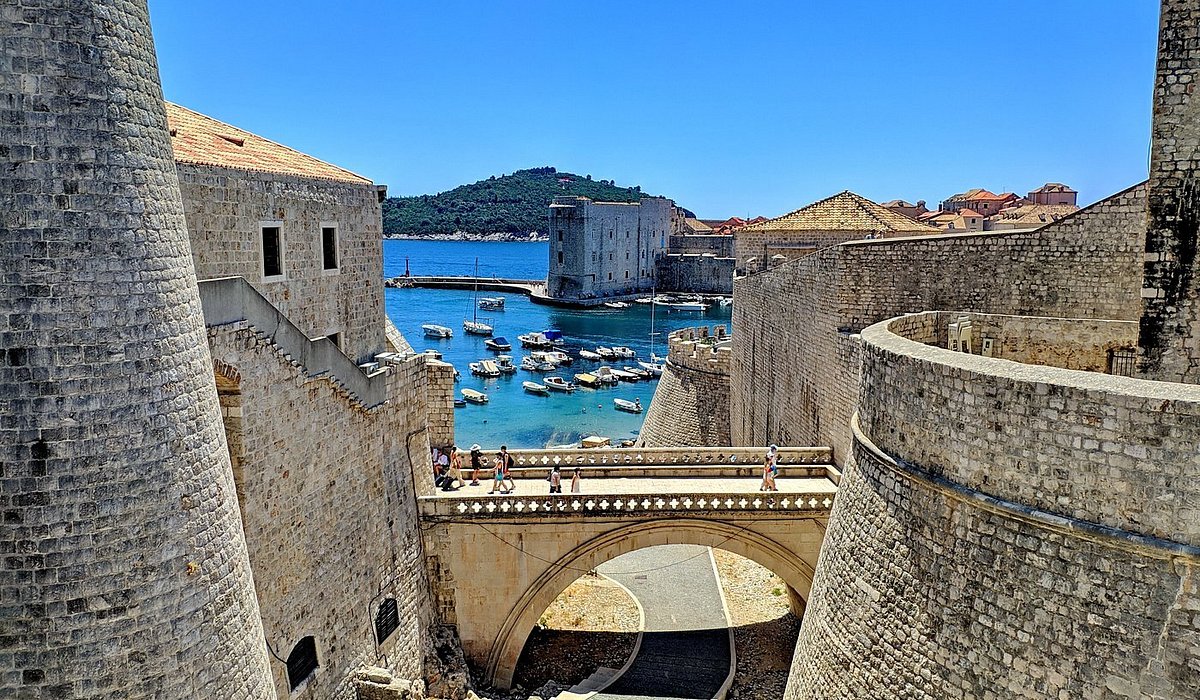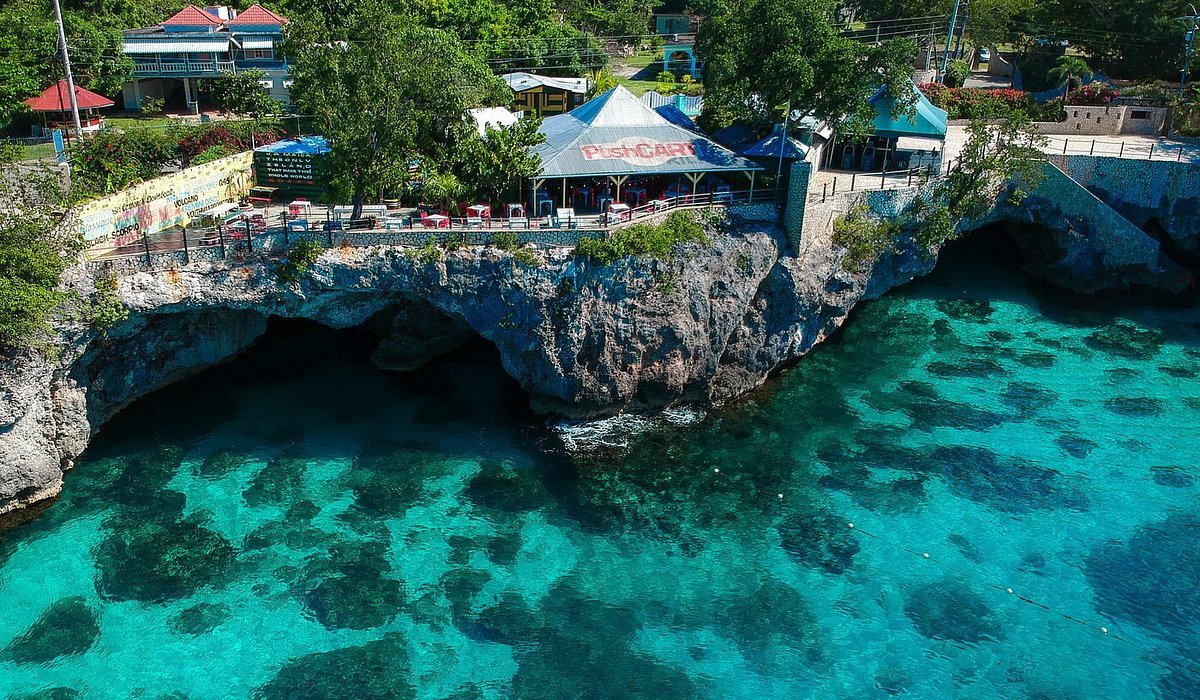Unforgettable landscapes, wildlife safaris, and all the geysers.
Yellowstone has the best name recognition of any national park, and it’s got nothing to do with a certain television show and everything to do with its hissing geysers, steamy thermal springs, and neon-colored pools. Get the grand tour on this three-day itinerary, which will take you on a loop around America’s oldest national park. There are also quite a few surprises in store (spoilers ahead): a smaller—but equally scenic—Grand Canyon, historic forts, and hidden valleys teeming with wildlife, including bison, elk, and bears (oh my!).
A quick geography note: Yellowstone spans 2.2 million acres and three states (Wyoming, Montana, and Idaho). So, this itinerary depends on which direction you’re coming from (there are five entrances) and where you’re planning to go. Feel free to swap the days to fit your preferred route. No matter which order you do it in, you’ll see the major landmarks, jaw-dropping landscapes, and scenic spots that have been vetted by real Tripadvisor traveler reviews.
DAY ONE
MORNING: Geyser shows galore
Before you start the car, download the Yellowstone National Park app and save it for offline use. It’s like a private guide in your pocket, with GPS to tell you what to look for along the way.
Your first day is all about checking off Yellowstone’s can’t-miss big hitters. Start with Old Faithful: This famous geyser erupts about every 75 minutes and only lasts one to five minutes, so you’ll want to time it right. Luckily, the aforementioned national park app tracks Old Faithful’s eruptions and predicts when the next one will be. Tip: Plan to arrive 20 minutes early to grab a front-row seat to see the geyser shoot 140 feet in the air. The rocking chairs on the patio at the historic Old Faithful Inn are a pleasant place from which to view it. After the show, walk around the boardwalks in the Upper Geyser Basin to check out the Grand Geyser, Castle Geyser, Daisy Geyser, and Morning Glory Pool. Stop across the street at Biscuit Basin, with its stunning Sapphire Pool and Jewel Geyser, before continuing on your way.
Travelers say: “We live in Montana, and try to visit Yellowstone once a year. We never get tired of it, even though we’ve been going since 1967. Here are some local tips: First, stay inside the park if you can. The ‘gateway communities’ are nowhere as pleasant or authentic. Second, get to the popular sites (like Old Faithful or Norris Geyser Basin) early in the morning (before 8 a.m.) to avoid the crowds. Third, take a hike. Even on the craziest summer weekends, the backcountry tends to be peaceful, with plenty of elbow room.” —@Rehoboth5
AFTERNOON: Colorful thermal springs
For a refreshing dip, head to Firehole River—Yellowstone’s only swimming hole. (Tip: It’s only open in the summer season. Check the conditions and regulations before you go.) Then, follow the boardwalk to the rainbow-hued Grand Prismatic Spring (the biggest thermal spring in the U.S.), the eye-popping Turquoise Pool, and the Opal Pool. The Midway Geyser Basin is better from a bird’s-eye view, which you can get if you take the Fairy Falls trail and hike just under a mile to the Grand Prismatic Overlook. If you keep following the trail (five miles round-trip), you’ll stumble upon a beautiful waterfall. Otherwise, you can head back down and take the Firehole Lake scenic drive to the Fountain Paint Pot trail, a leisurely half-mile stroll around all four of the park’s hydrothermal features, including geysers, hot springs, mud pots, and fumaroles.
YELLOWSTONE HIGHLIGHTS TOURS
- Get the VIP treatment on this private tour of Yellowstone’s popular lower loop. Bonus: the guide is also a professional photographer, so you’re guaranteed to get great pictures.
- Lace up your boots for this six-hour geyser hiking tour from Biscuit Basin Trailhead along Firehole River.
- Yellowstone turns into a winter wonderland blanketed with snow in the colder months. You’ll get to explore it on this full-day snowmobiling adventure.
EVENING: Waterfalls and relaxing walks
About 20 minutes north, pull off the road at Gibbons Falls to take a picture with the 84-foot cascade (the best view is at the end of the path). Then, continue another 15 minutes to Norris Geyser Basin. Here, you can choose from two short trails: the Porcelain Basin, a loop of steamy colorful pools, and Back Basin, a serene wooded path that brings you to Emerald Spring and the world’s largest geyser, Steamboat. Done sightseeing? Drive a half-hour north to spend the night in Mammoth.
Worthy detours along the way
DAY TWO
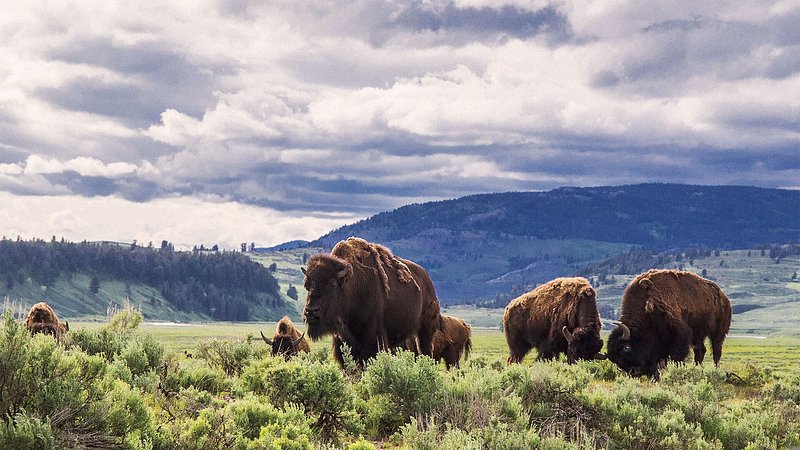
MORNING: Other-worldly landscapes
Today, you’re exploring Yellowstone’s northern loop. Pack a picnic with gourmet goods from the general store before stopping at the Albright Visitor Center and Museum to learn about Fort Yellowstone’s history as well as the park’s flora and fauna. Then, make a beeline to Mammoth Hot Springs, one of the most popular sites. These extraordinary limestone travertine terraces are unlike anything else you’ll see in Yellowstone; they almost look like an icy, frozen waterfall—just don’t jump in, as it’ll fatally burn you! Five minutes up the road, Boiling River used to be an under-the-radar spot to swim, but it permanently closed after the floods in 2022; rangers hope to reopen it in the future.
Travelers say: “Terraced travertine formations are so unusual and quite brilliant in color. Fascinating visit to a unique geological place. The visitor center is well worth stopping by as it has a detailed history of Yellowstone and its natural environs. Plus all the elk are usually arrayed right in front of it with the rangers always careful to protect the animals.” —@Kathy Z
AFTERNOON: Thundering cascades
You’ll want to take a few detours on the way to Lamar Valley. First is Undine Falls—you can easily see it from the road or stretch your legs on an 8.5-mile hike up the Lava Creek Trail to the cascade. Once you get to Tower Junction, a small town at the crossroads of Lamar Valley, you can quickly veer south to see Calcite Springs (park at the picnic area and follow the short half-mile trail along the canyon rim to the viewpoint) as well as the 132-foot Tower Fall and its striking rock columns formed from a large lava flow. Keep your eyes peeled as you might come across bighorn sheep, peregrine falcons, and red-tailed hawks here.
YELLOWSTONE WILDLIFE TOURS
- If you’re not afraid of the cold, consider a winter snowshoeing tour with experts who can spot animals a mile away as they bound through the snow.
- This full-day safari tour picks you up at your Jackson Hole accommodations and goes to Grand Teton and Yellowstone National Parks. It’s led by an experienced naturalist who knows everything about geology and wildlife. A light breakfast (blueberry muffins and orange juice), a scenic picnic lunch, and snacks are included.
- It’s worth it for big groups to do a private wildlife and waterfalls tour to the park’s Grand Canyon, Yellowstone Lake, and Hayden Valley, where bison, elk, and bears abound.
EVENING: Animal sightings on safari
There’s a reason the 10,000-year-old Lamar Valley is known as Yellowstone’s Serengeti. Take a self-driven safari, and you’ll likely see bison, elk, deer, and pronghorn antelope (the fastest animal in the world!). You can spot bears, eagles, and wolves if you’re lucky. For the best chance to see wildlife, go at dawn or dusk. I suggest the latter because there are usually fewer crowds at night. Plan to arrive 90 minutes before sunset, and remember to bring binoculars! When you’ve finished communing with nature, stay at the Roosevelt Cabins in Tower Junction or one of the many lodges in Canyon Village, 30 minutes south.
Worthy detours along the way
DAY THREE

MORNING: Canyons and cliffs
Rise and shine! Set your alarm for an early wake-up so you don’t miss the action at Hayden Valley. It’s one of the best places to spot wolves and grizzlies, which are the most active at dawn (don’t get there any later than 8 a.m.). Next door, the sulphuric Mud Volcano is an excellent stop on the way to one of the park’s most surprising areas.
Did you know that Yellowstone has its own Grand Canyon? This 24-mile-long, 1,000-foot-deep gorge has multiple sweeping vistas, but I recommend starting with Artist Point on the South Rim as it has a direct view of the thundering Yellowstone Waterfall and the rainbow that forms from the mist. On the North Rim, get up close and personal with the Lower Falls (and descend the steep stairs and switchbacks of the Brink of Lower Falls Trail to nearly touch the water). You can also drive to the parking lot at Inspiration Point for another broad clifftop view.
Travelers say: “The park is so spread out, and travel is slow because of traffic and animal sightings/blocking the road that you should stay where your primary interest and time indicates. If it is the geysers, go south. If it is the canyon, mud pots, and river, stay central, and the north has Mammoth and the wildlife valley.” —@SeniorTravelerTF
AFTERNOON: Lakefront fun
You deserve a break after such a jam-packed morning. Drive 15 minutes south to the waterfront village on Lake Yellowstone, the largest high-elevation lake in North America. Stretching across 132 square miles, this lagoon is encircled by a jaw-dropping hiking trail. You can fish, kayak, or rent a boat to explore further in the warmer months. Remember that the water temperature hovers at about 40 degrees year-round, making it way too cold to swim.
Snag a seat for lunch at the elegant Lake Yellowstone Hotel dining room. A string quartet adds to the ambiance, as does the serene waterfront vista. Start with the poached pear salad, then order the bison tenderloin as your main, and finish with the huckleberry ice cream.
- Calling all anglers: This fly-fishing trip on Madison River is for you. Plus, it’s led by a knowledgeable guide who grew up in the region.
- On a half-day kayak tour, you’ll paddle out to see some of the park’s most under-the-radar coves.
- For a heart-pounding adventure, go whitewater rafting on Yellowstone River’s rapids.
EVENING: Dinner with a view
On the final half-hour stretch south, you’ll reach West Thumb. This park’s largest geyser basin is an ideal spot for sunset, with its lunar-like landscape and Lake Yellowstone shimmering in the background. Follow the nature walk around the cerulean Seismograph Pool, aqua Black Pool (confusing name, I know), and jade Abyss Pool, the deepest hot spring in the park. Then, stop at the lake’s edge, where you’ll see cones sticking out of the water. Legend has it that local fishermen boiled their fresh catch from the vent of the Fishing Cone, which looks like a volcano sprouting from the surface.
Head to the Grant Village Dining Room for a fantastic final meal when hunger strikes. The wooden beams and floor-to-ceiling windows give the lodge an upscale air (and the lovely lakeside location can’t be beaten). Try the trout and the crème brûlée cheesecake. Tip: Make dinner reservations far in advance.
Worthy detours along the way
Know Before You Go
-
Yellowstone welcomes about 4 million visitors annually and is the busiest in July and August. It’s best to go from late April through May (when you’ll see bison and elk calves, bear cubs, and wildflowers) or September through October (great weather, fewer crowds). Plus, it’s affordable in the shoulder season. Tip: Check for road closures and trail conditions on the Yellowstone app.
-
Schedule your trip during the workdays—Mondays and Tuesdays tend to be the slowest—as the weekends attract the most tours and visitors.
-
Yellowstone is open 24 hours a day, 365 days a year, but only one entrance (the north gate near Roosevelt Arch and Mammoth) is open year-round. The other entrances, visitor centers, and lodges are open from May through October. Park facilities are typically open from 9 a.m. to 6 p.m.
-
Old Faithful: To be right up in the action, book a room at the Old Faithful Inn, a historic lodge with a Western-inspired restaurant, rustic rooms, and cozy rocking chairs facing the geyser. Two other hotels (Old Faithful Lodge and Snow Lodge) are within walking distance.
Lake Yellowstone: The striking Lake Yellowstone Hotel is arguably the most high-end property, with updated guestrooms, a round sunroom with live pianists, and a romantic restaurant. The affordable and family-friendly Lake Lodge Cabins are right next door.
Grant Village: Only five minutes from West Thumb, Grant Village is a small enclave with a quiet lodge, lakefront campground, and visitor center.
Canyon Village: On the eastern side of the park near Yellowstone’s Grand Canyon, this area has the largest, most modern hotel, Canyon Lodge & Cabins, housed inside five new buildings.
Mammoth: This is the gateway to the northern tip of the park and the historic fort. Mammoth Hot Springs Hotel is the only one that’s smack in the center of town, but there are more than a dozen hotels 15 minutes up the road in Gardiner, Montana.
West Yellowstone: It will be cheaper (but a bit inconvenient) to stay outside the park. If you do, West Yellowstone is a good bet due to its highly-rated restaurants, such as the finger-licking Firehole BBQ, the meat-centric Bar N Ranch (try the short rib), and sweet Ernie’s Bakery.
-
It’s best to rent a car since Yellowstone is so spread out and has no shuttle service. You can also book tours where transportation is included.
